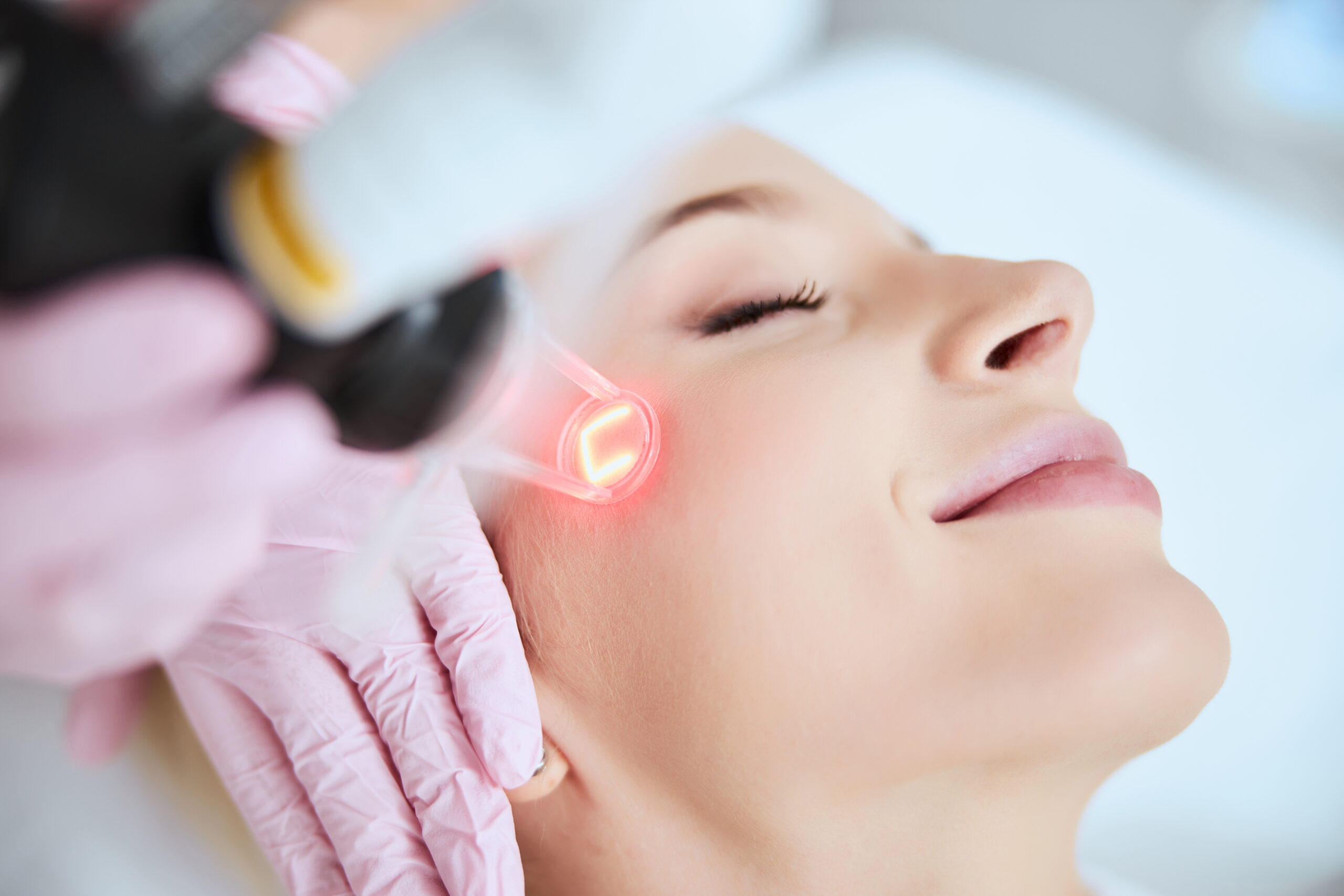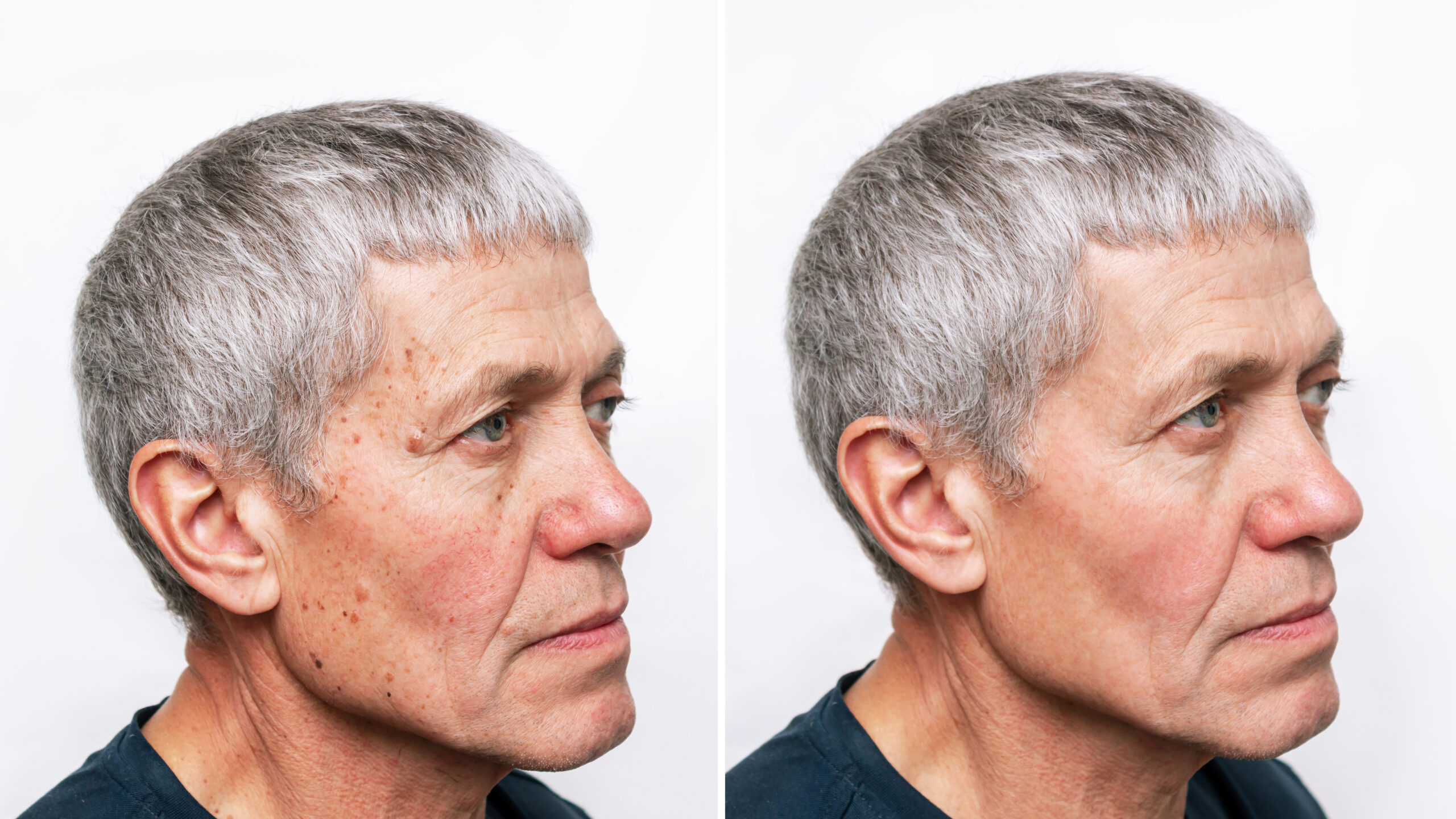Erbium lasers have revolutionized dermatology and cosmetic medicine, offering remarkable skin rejuvenation results with minimal downtime.

Erbium-doped yttrium-aluminum-garnet (Er:YAG) laser resurfacing is a safe and effective treatment for many skin concerns. Providers often use it to reduce sun damage, fine lines, and harmless skin growths.
In the past, carbon dioxide (CO2) lasers were the only option for laser skin treatments. However, since the FDA approved Er:YAG lasers in 1996, they’ve become a popular choice. Studies show they work as well as CO2 lasers and may offer faster recovery.
Here’s how it works: The Er:YAG laser sends out a pulse. A crystal inside the machine creates light energy. The skin absorbs this energy through the water in its top layers.
As a result, two things happen:
First, the laser vaporizes the top layer of skin. This starts the repair process using hair follicles and sweat glands.
Second, the laser heats the deeper layer of skin. This boosts collagen production, which helps smooth the skin and reduce wrinkles and scars.
As the water vaporizes, it also cools the skin. This cooling protects nearby tissue from heat damage. It also allows the provider to safely treat the same spot more than once.
Fewer sessions are needed, and there’s less risk of burns or side effects. Overall, Er:YAG laser resurfacing delivers strong results with a gentler healing process.
Erbium lasers offer advantages such as precision targeting of small areas like moles, causing less thermal damage than CO2 lasers, leading to shorter recovery times, fewer side effects like swelling and bruising, and safe use on sensitive areas on the face. Additionally, Erbium treatments stimulate collagen production, which tightens and smooths the skin, and can effectively treat various skin conditions including wrinkles, sun damage, age spots, acne, scars, and stretch marks.
Healthcare professionals have the expertise to customize Erbium laser skin resurfacing treatments based on the individualized requirements and skin characteristics of each patient.
A variety of Erbium laser options are available in the market, and the selected provider will assist in choosing the most suitable device, treatment intensity, and session frequency to achieve the best possible outcomes.
In addition to addressing aging signs and damaged skin, laser resurfacing can effectively target a diverse range of other concerns with reduced downtime compared to CO2 laser treatments.
Erbium lasers, like other resurfacing lasers, may present potential risks for individuals with medium to deep skin tones due to their targeted pigment capabilities. While a less intense treatment may be possible, it is highly recommended to seek guidance from a skilled physician experienced in treating individuals with olive, brown, and deep skin tones to assess the appropriateness of this treatment option.
Additionally, multiple treatments may be necessary as erbium lasers do not penetrate as deeply as fully ablative CO2 lasers.
Providers perform Erbium laser resurfacing as an outpatient procedure. The appointment usually lasts between 30 minutes to 1 hour, depending on the size of the area and how intense the treatment needs to be.
Before the procedure, your provider will numb the treatment area with local anesthesia. In addition, they may give you an oral sedative or Pronox to help you relax during the session.
The duration of downtime required for skin treatments can vary, with lighter treatments necessitating several days of recovery and more intense treatments requiring over a week. During this period of recuperation, it is typical for the skin to experience swelling and develop a rough texture. Initially, the skin may feel tender, leading to sensations of itchiness and discomfort. Ensuring the protection and retention of skin moisture during the healing phase is essential. This includes the use of ointments and heavy creams initially, with a gradual shift towards lighter creams and serums as the healing progresses.
Recovery and results usually spans just a few days, during which the skin may undergo flaking and peeling. However, it may take over a week for more intense erbium treatment, and full results may take several months for collagen and elastin to be fully regenerated.
Laser skin rejuvenation treatments fall into two main categories: ablative and non-ablative.
Ablative lasers remove or heat the top layers of the skin. This triggers healing and boosts collagen production. The CO2 laser is a common example of an ablative laser. The Er:YAG laser is also in this category.
Non-ablative lasers, on the other hand, do not remove the skin’s surface. Instead, they create controlled heat in the deeper layers. This still stimulates collagen and elastin but with less damage to the outer skin. Examples include diode, erbium:glass, and Nd:YAG lasers.
While ablative lasers give stronger, more noticeable results, they also come with more downtime. In contrast, non-ablative lasers are gentler and require less recovery time. However, patients often need more sessions to match the results of a single ablative treatment.
It is important to exercise caution with this laser technique, as it may not be suitable for individuals with skin types IV-VI, according to the Fitzpatrick scale, due to the heightened potential for hyperpigmentation. Nor is it recommended for those who have been on certain acne treatment medications within the previous six to 12 months. Anyone with melanated skin should seek a provider with extensive experience treating melanated skin.
The cost of an Erbium laser session typically ranges from $1500 to $3000. The price can vary depending on factors such as location, type of laser, and the skill level of the provider. Skill level is particularly important when using this type of laser. The cost may be higher in areas with higher living expenses or in facilities with state-of-the-art equipment. It is essential to choose a highly skilled provider when considering Erbium laser treatment.




